Table of Contents
ToggleIn today’s digital jungle, vulnerability scanning is like having a trusty sidekick that sniffs out trouble before it bites. Just like a superhero wouldn’t venture into a villain’s lair without checking for traps, businesses can’t afford to ignore potential security flaws. With cyber threats lurking around every corner, it’s time to put on those virtual detective hats and uncover hidden weaknesses.
What Is Vulnerability Scanning?
Vulnerability scanning consists of assessing computer systems, networks, and applications for security weaknesses. This process identifies security gaps before attackers exploit them. Regular scanning helps organizations maintain their security posture.
Automated tools perform vulnerability scans, evaluating systems against known vulnerabilities documented in databases like the Common Vulnerabilities and Exposures (CVE). These scans can be either authenticated or unauthenticated. Authenticated scans require user credentials to access deeper system insights, while unauthenticated scans analyze the surface of the systems.
Although vulnerability scanning is vital, it shouldn’t occur in isolation. Organizations must integrate it with other security measures, such as penetration testing and continuous monitoring. Combining these strategies enhances overall security effectiveness.
Scans vary in frequency, from weekly to monthly or quarterly, influenced by the organization’s size, industry, and compliance standards. Industries handling sensitive data, like healthcare and finance, often necessitate more frequent scans due to stricter regulatory requirements.
Results from vulnerability scans generate detailed reports, highlighting critical, high, medium, and low-risk vulnerabilities. An organization must prioritize remediation efforts based on these risk levels. Addressing critical vulnerabilities promptly protects against potential breaches or data loss.
Staying updated with emerging threats and vulnerabilities is crucial. Cybersecurity teams typically develop processes for applying patches and updating systems based on scan findings. Continuous improvement in security protocols relies on regular assessments to adapt to the ever-changing threat landscape.
Importance Of Vulnerability Scanning

Vulnerability scanning plays a crucial role in safeguarding digital environments. It proactively identifies security weaknesses, allowing organizations to address vulnerabilities before attackers can exploit them.
Risk Management
Effective risk management requires regularly identifying and mitigating threats. Companies that perform vulnerability scans can pinpoint weaknesses in their systems. By categorizing vulnerabilities by severity, organizations can prioritize risk remediation efforts. The process helps allocate resources effectively and protects sensitive data from potential breaches. Businesses find it valuable to integrate risk management with overall cybersecurity strategies, ensuring a proactive approach to safeguarding digital assets.
Compliance Requirements
Compliance requirements often dictate the frequency and depth of vulnerability scanning. Many sectors, such as healthcare and finance, must adhere to strict regulatory standards that necessitate regular security assessments. Compliance frameworks like HIPAA and PCI-DSS require documented evidence of vulnerability management practices. Vulnerability scans serve as essential components of audits, helping to demonstrate adherence to these regulations. Organizations benefit from establishing these processes, as compliance fosters trust among clients and stakeholders while reducing the risk of legal repercussions.
Types Of Vulnerability Scanning
Vulnerability scanning encompasses various types tailored to specific environments. Each type plays a crucial role in identifying security weaknesses.
Network Scanning
Network scanning identifies vulnerabilities within networks. It examines devices like routers, switches, and firewalls for misconfigurations. Scans can reveal unauthorized access points and outdated software. During assessments, tools like Nessus or Qualys are commonly used to evaluate network security. Organizations gain insights into potential entry points for attackers. Regular scanning helps maintain network integrity and protect sensitive information. Frequency depends on the network size and the threat landscape.
Web Application Scanning
Web application scanning focuses on identifying vulnerabilities in web applications. This type of scanning assesses code and user inputs for security flaws. Techniques like SQL injection or cross-site scripting can be detected during these scans. Tools such as OWASP ZAP and Burp Suite are effective for this purpose. Regular assessments enhance the security posture of web applications. Patching vulnerabilities promptly minimizes risks associated with data leaks or breaches.
Cloud Scanning
Cloud scanning helps identify vulnerabilities in cloud environments. This scanning method ensures cloud configurations comply with security best practices. Service Misconfigurations often lead to significant vulnerabilities. Tools like Prisma Cloud and CloudCheckr provide insights into potential weaknesses. Organizations benefit from continuous monitoring as cloud computing evolves. Addressing identified vulnerabilities reinforces the cloud security framework. Regular cloud scanning supports compliance with key industry regulations.
Best Practices For Vulnerability Scanning
Vulnerability scanning plays a crucial role in identifying security weaknesses. Adopting best practices enhances its effectiveness.
Regular Scanning Schedule
Establishing a regular scanning schedule ensures consistent security assessments. Organizations should consider scanning on a monthly basis, with heightened frequency in regulated sectors like healthcare and finance. Continuous monitoring aids in identifying new vulnerabilities as they emerge. Integrating scans with software updates helps maintain security during changes. Automating this process can reduce manual oversight, allowing teams to focus on remediation.
Prioritizing Vulnerabilities
Prioritization of vulnerabilities allows organizations to allocate resources efficiently. Categorizing issues by risk level simplifies the remediation process. Critical vulnerabilities should receive immediate attention while lower-risk ones can be scheduled for later resolution. Utilizing common frameworks, such as the CVSS (Common Vulnerability Scoring System), provides a consistent method for assessing severity. Teams can also consider the potential impact on sensitive data to further refine prioritization. Focusing efforts on high-risk vulnerabilities supports a proactive security posture.
Vulnerability scanning is an indispensable part of an organization’s cybersecurity strategy. By proactively identifying security weaknesses, businesses can mitigate risks before they escalate into significant threats. Integrating these scans with other security measures enhances overall protection and ensures compliance with industry standards.
Regular vulnerability assessments not only foster trust among clients but also safeguard sensitive data from potential breaches. As cyber threats continue to evolve, maintaining a robust vulnerability scanning process becomes critical. Organizations that prioritize this practice will be better equipped to navigate the complexities of the digital landscape and protect their assets effectively.




